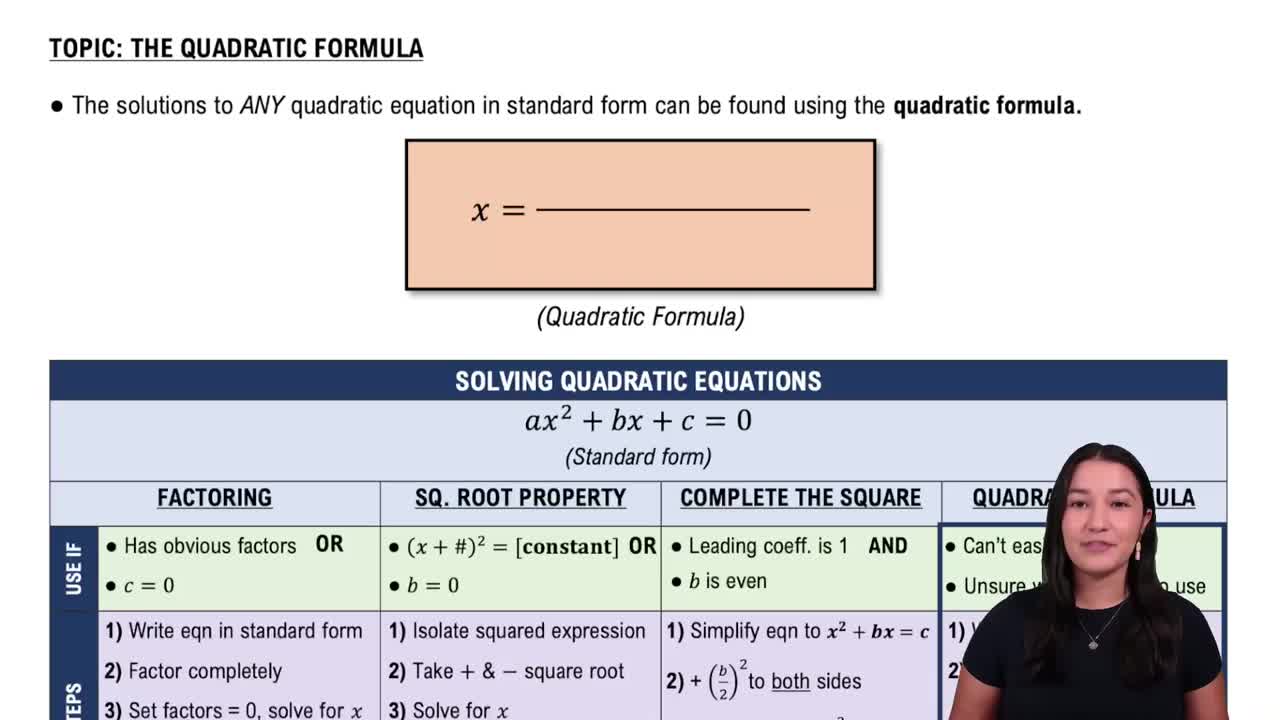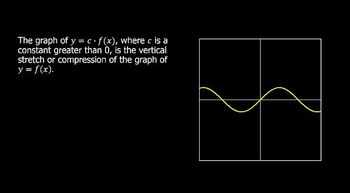Table of contents
- 0. Review of Algebra4h 16m
- 1. Equations & Inequalities3h 18m
- 2. Graphs of Equations43m
- 3. Functions2h 17m
- 4. Polynomial Functions1h 44m
- 5. Rational Functions1h 23m
- 6. Exponential & Logarithmic Functions2h 28m
- 7. Systems of Equations & Matrices4h 6m
- 8. Conic Sections2h 23m
- 9. Sequences, Series, & Induction1h 19m
- 10. Combinatorics & Probability1h 45m
3. Functions
Transformations
Problem 67
Textbook Question
Textbook QuestionGraph each function. See Examples 6–8 and the Summary of Graphing Techniques box following Example 9. ƒ(x)=x^2+2
 Verified Solution
Verified SolutionThis video solution was recommended by our tutors as helpful for the problem above
Video duration:
1mPlay a video:
Was this helpful?
Key Concepts
Here are the essential concepts you must grasp in order to answer the question correctly.
Quadratic Functions
A quadratic function is a polynomial function of degree two, typically expressed in the form f(x) = ax^2 + bx + c. The graph of a quadratic function is a parabola, which opens upwards if 'a' is positive and downwards if 'a' is negative. Understanding the standard form helps in identifying key features such as the vertex, axis of symmetry, and intercepts.
Recommended video:

Solving Quadratic Equations Using The Quadratic Formula
Graphing Techniques
Graphing techniques involve methods for accurately plotting functions on a coordinate plane. For quadratic functions, techniques include finding the vertex, determining the direction of the parabola, and calculating x- and y-intercepts. These techniques help in sketching the graph and understanding the function's behavior visually.
Recommended video:
Guided course

Graphs and Coordinates - Example
Vertex and Axis of Symmetry
The vertex of a quadratic function is the highest or lowest point on the graph, depending on the direction the parabola opens. The axis of symmetry is a vertical line that passes through the vertex, dividing the parabola into two mirror-image halves. Knowing how to find the vertex and axis of symmetry is crucial for accurately graphing quadratic functions.
Recommended video:

Vertex Form

 5:25m
5:25mWatch next
Master Intro to Transformations with a bite sized video explanation from Nick Kaneko
Start learningRelated Videos
Related Practice


























